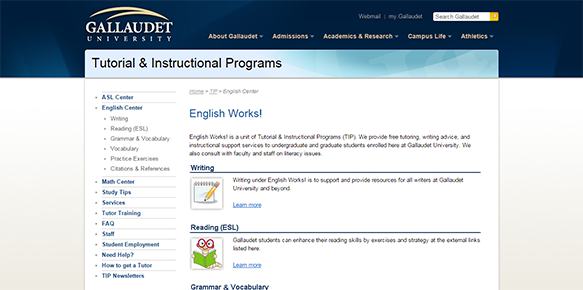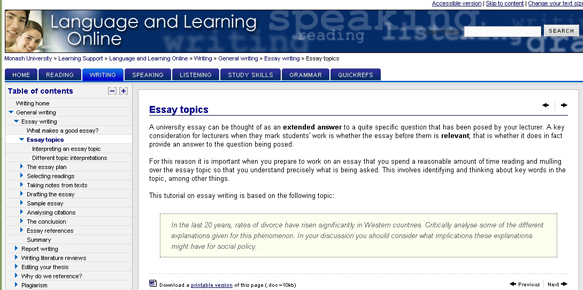The Scenario for Better Essay Writing Through Online Research
After a few terms of teaching HPB and 604-101, I realized how difficult and frustrating it was for students to understand the ins and outs to essay writing in English. In fact, not only were most of them awkward at making an outline or a plan, they were applying a French methodology ( sujet amené, posé etc.) to their writing. The few pages that most ESL manuals supply didn’t seem to be enough. The students remained somewhat in the dark.
So I began exploring the net in search of various models better suited to the students’ needs. I found quite a variety of sites, for example: Gallaudet University’s English Works site and Monash University’s Online Writing Site, and in doing so, I realized I was clarifying concepts for myself as well as having fun exploring. I thought the students might like a go at playing detective so I asked them to look for information themselves, supplying them with a guideline: define a thesis statement, a topic sentence and so on. This serves a purpose that I find essential to learning: giving the students the tools to become autonomous.

Gallaudet University’s English Works site

Monash University’s Online Writing Site
I took the classes to the lab and asked them to google things likeessay writing or exercises in essay writing or what is an essay and collect information that they would then share with the rest of the class in groups of 4 or 5. This, of course, allows them to engage in a speaking activity that one could choose to evaluate. From the exchange, the students were then asked to write-up an outline, in groups of 3, on given topics (smoking, gambling, etc.). I collected their outlines in order to comment and give them feedback the following class. I also used their data to put together a better outline, which I also handed out during the following class. This time, and again in groups of 3 – thus creating another speaking situation- the students had to find the arguments, write-up the filler so to speak, preferably at the lab where students are also shown how to use the correcting features in Word. These arguments were collected for feedback once again. This exercise can be repeated as many times as a teacher wishes, until he or she feels that the technique has been well assimilated. This process should lead to a final INDIVIDUAL outline and essay of approximately 350 words.
I’ve applied this technique two terms in a row now, and I’ve found that I get far better essays. There are the few that still struggle – learning disabilities and weaknesses in the mother tongue can only be corrected with a lot more time than what we are allotted – but for the most part, they’ve given me papers that were coherent and interesting to read, instead of a repetition of arguments and poor usage of transition words.
One of my colleagues applied this method last term and she was also happy with the results. Realizing that this scenario could work for more teachers than myself, I remembered that the Profweb scenario feature has a suggestion form which seemed like a great way to share my ‘discovery’ with teachers around the province.
There was a form which I downloaded. Filling it out actually helped me to refine my procedures. I also saw parallels between what I was submitting and what I had asked my students to do! I submitted the results to Profweb and shortly after was invited to write this story. As this story goes on-line, my scenario is appearing in Profweb’s pages. You can link to it from here!
Do you have any scenarios that you would like to share with colleagues? Have you used scenarios in your own teaching? Do you have comments about my ‘discovery’? Share these and any other comments with your colleagues below.

